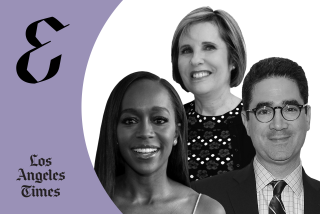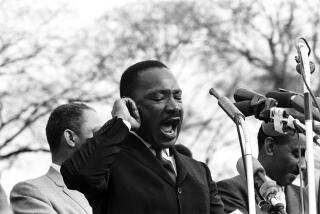Excerpt: Billie Jean King on growing up in Long Beach and saving up $8.29 for her first racket
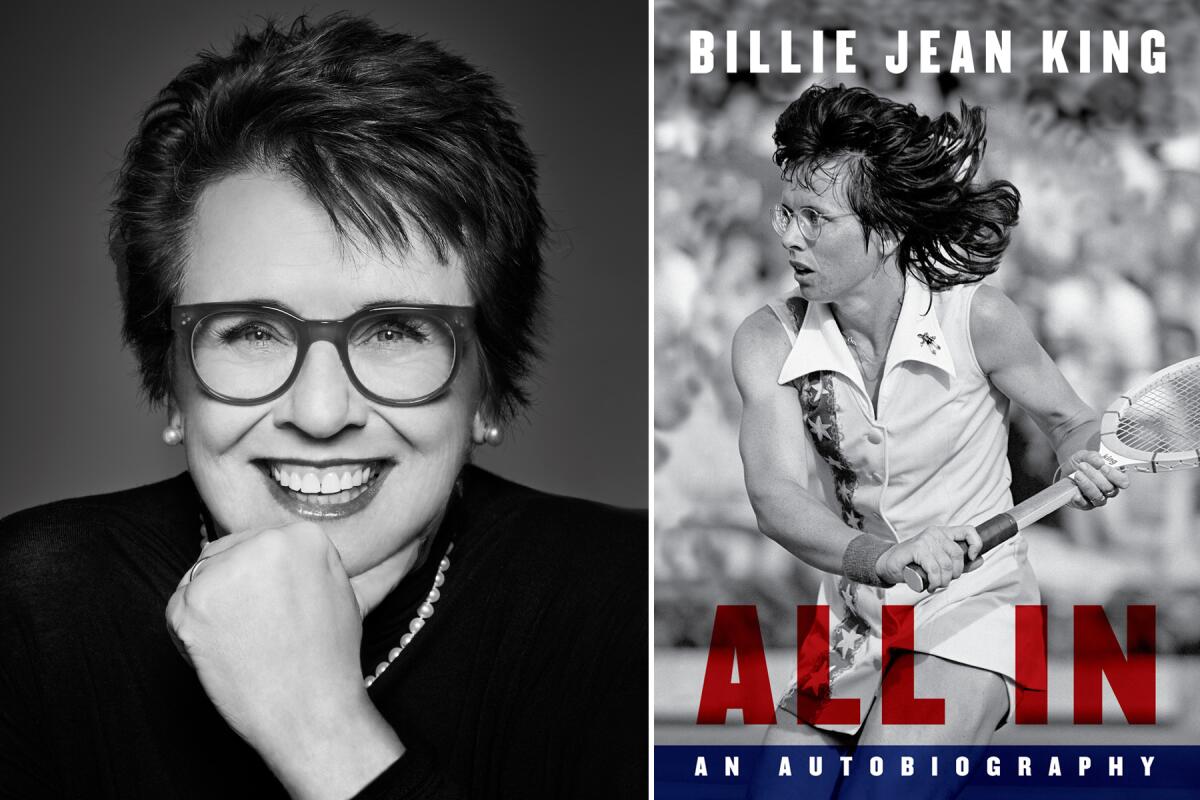
The Los Angeles Times Book Club is reading “All In” by Billie Jean King, a memoir about her tennis career set against the backdrop of the women’s movement, civil rights movement and fight for LGBTQ rights. This excerpt comes from Chapter 1, about her childhood in Long Beach. You also can listen to King read the excerpt below.
I can still remember exactly what it looked, felt, and sounded like on that September afternoon in 1954 when my life changed forever. The sky overhead was bright as a bluebird’s wing. The Southern California sun felt warm on my skin, and I could smell the spicy bark of the eucalyptus trees that surrounded the public tennis courts at Houghton Park in Long Beach. A handful of boys and girls were lining up for their drills as I arrived with my friend Susan Williams for my very first session with a coach named Clyde Walker. It wasn’t long before the thwock-thwock-thwock of the balls being struck on our court blended into the noise rising from the adjoining court, too.
Susan had introduced me to the sport a few weeks earlier by asking me a simple question as we sat in our fifth-grade classroom: “Do you want to play tennis?”
“What’s tennis?” I replied.
I listened intently as Susan explained that in tennis you could run, jump, and hit a ball — three things I loved about basketball and softball, two of the team sports I played. Susan invited me to play at the Virginia Country Club, to which her family belonged. I was predictably awful, but Susan thought it was funny when I blasted a ball over the fence and shouted, “Home run!” — a first, I’m guessing, at the venerable VCC.
On the way home my mind was racing. That night I asked my father, “Daddy, which sport would be best for a girl? You know, in the long term.”
My father put down his newspaper and thought for a while. “Well, there’s swimming, golf, and” — I waited for it — “tennis.”
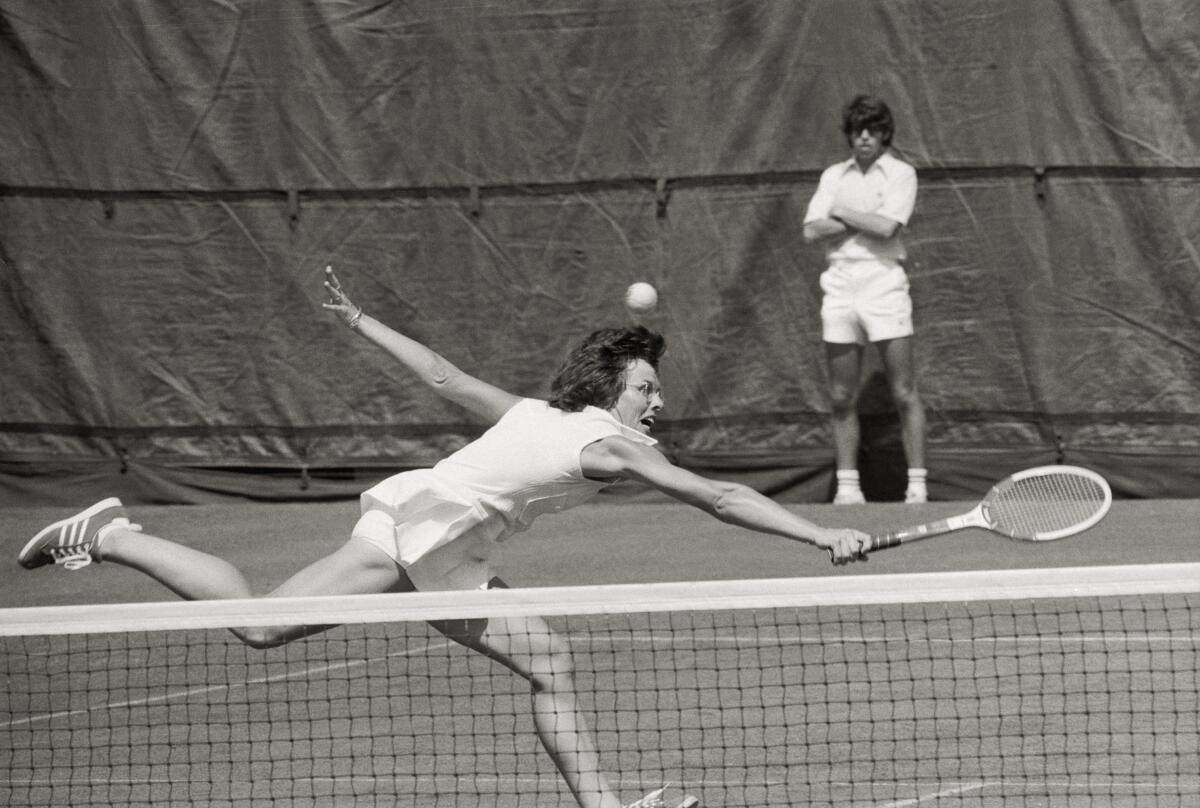
Tennis! I had tried swimming, but I was the worst in my class at the YWCA. The great female star Babe Didrikson Zaharias played golf, but to me golf looked too slow. Tennis seemed just right. I liked the variety and mental challenge. I liked being able to hit the ball over and over. Tennis fascinated me from that first day I played with Susan, using a borrowed racket.
When I pestered my parents for my own racket, I wasn’t discouraged a bit when they reminded me that money was tight, and that I’d have to buy it myself. I did odd jobs for neighbors, who smiled and indulged me when I told them my goal. I weeded flower beds, swept sidewalks. My mom advanced me $2, and I rode my bike to a local pharmacy, where I bought candy and then resold it to the other kids at a small markup.
I put every nickel and dime I earned into a Mason jar above the kitchen sink. After a few months I couldn’t wait anymore and my parents took me to a sporting-goods shop. When my parents approached the salesman and said they’d like to see tennis rackets for their daughter, I mustered the courage to ask him what $8.29 could buy. He showed us a sweet little wood racket with a purple-and-white throat and a purple grip. I thought it was beautiful. I bought it and slept with it that night . . . and the next night . . . and many, many nights after that.
While I’ll remain forever grateful to Susan for introducing me to tennis, it was Clyde Walker whose free instruction made the sport come alive for me. Once Clyde showed us how to hit a proper groundstroke, I loved the pure feeling of the racket strings connecting cleanly with the ball, absorbing its energy and hurling it back. I couldn’t get enough of the thrill of making contact — how the transference of energy shoots through your fingers, your arm, your shoulder, and how your whole body is involved as you swing. I loved the drama of it all, too — chasing down each ball, the universe of possibilities that opened up as I drew my racket back, then that split-second pause where everything hangs in the balance as you’re preparing to hit a return. There was something swashbuckling and instantly addictive about all of it. I loved the challenge and suspense of trying to hit a perfectly executed shot and the charge I got when the ball landed out of my opponent’s reach. Then I couldn’t wait to get the next ball and do it again.
By the end of that first afternoon with Clyde I knew I had discovered my sport. It was as if a window into my future had been flung open. I was only ten, but in the breathy way that ten-year-olds think, I was already certain it was my destiny, and I just had to tell somebody.
“Mom! Mom! I found out what I’m going to do with my life!” I said when she arrived to pick me up in our green DeSoto. “I want to be the No. 1 tennis player in the world!”
She smiled. This was not unlike the time a few years earlier when I stood in the kitchen as we were drying the dishes and told her, “Mom, I’m going to do something great with my life — I just know it! You watch.”
This time — as then — my mother looked at me and said the absolutely best, most revolutionary thing she could have said to a girl like me in 1954: “Okay, dear.”
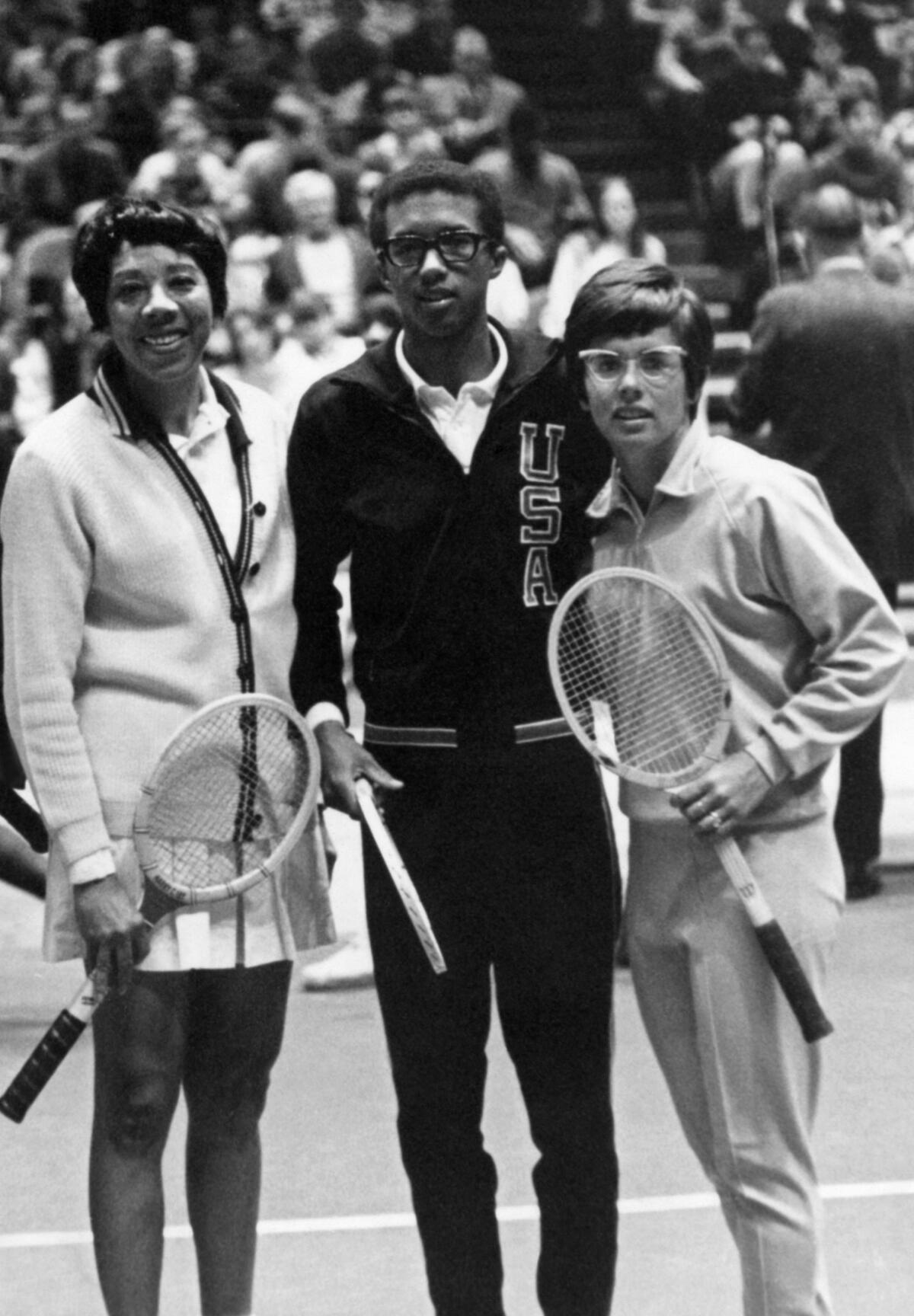
I was grateful that my parents resisted setting limits on me, which is different from saying that my upbringing was always progressive. My mom and dad were strict and conservative in many ways, but they also told my brother and me we could be anything we wanted to be. When Randy, who is five years younger than me, announced at the dinner table one night that he also intended to be a pro athlete — a Major League Baseball player — both my parents covered their faces with their hands, then peered out through their fingers with a look that said, Not you, too? Mom was already driving me to tennis matches all over Long Beach and beyond. My dad later said we wore out three cars between Randy and me.
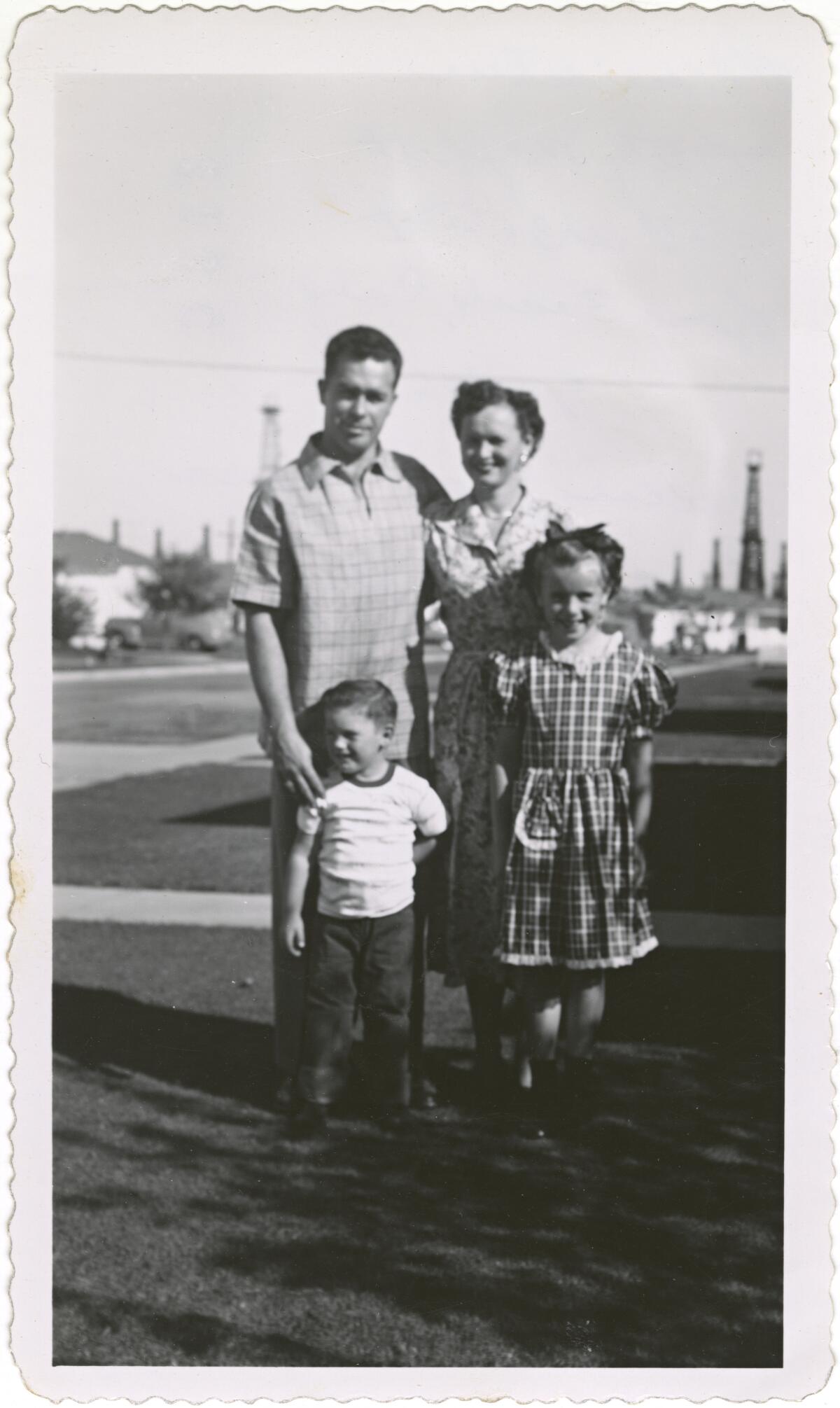
Randy ended up playing Major League Baseball for twelve years as a relief pitcher with the San Francisco Giants, Houston Astros, and Toronto Blue Jays. I went on to win thirty-nine singles, doubles titles, and mixed doubles titles at the four major or “Grand Slam” tournaments — the U.S. Open, Wimbledon, Roland-Garros (also known as the French Open), and the Australian Open — and accomplish a few other special things. I don’t think there is just one factor that explains our athletic success. I think a combination of lucky genes, incredibly devoted parents, opportunity, and chance all played a role. We were fortunate to grow up in Southern California with its perfect weather for developing athletes year-round. Sports was the air we breathed.
The term “snowplow parent” hadn’t been invented when we were kids, but it wouldn’t have applied to my folks anyway. They supported us but never pushed us to be sports stars. They concentrated more on being life coaches. Even my ultra-competitive father, who was a terrific athlete, never cared if we won or lost our games. “Did you try your best and have fun?” he’d ask, same as my mother did.
My parents always treated Randy and me equally, which was unusual for many families then. But when I didn’t share the same love of shopping or painting my fingernails that my mother did, I would notice the look on her face. She earned a cosmetology license the year she was engaged to Dad, and she was always so stylish in her pinched-waistline dresses and impeccable hair and makeup. I eventually learned that she had been a fast runner and terrific swimmer as a girl and used to body-surf in fifteen-foot-high ocean waves before she married my dad. On our swimming outings, Randy and I would thrash around, but she’d just float serenely, bobbing in the rolling waves like a cork. I’m sure I inherited some of her athletic talent, but she always played her abilities down. She had strong ideas about what was “ladylike.” She was happier (and far less conflicted) when I told her I was eager to sign up for cotillion like the other girls.
Later, once I started to question my sexual orientation, it was hard for me to forget those kinds of messages, or the day my hot-tempered father was driving Randy, my mother, and me to a tournament when I was about thirteen. We passed two men walking together down the street, and it triggered Dad’s memory. He told us a story about a man in the service who propositioned him. “I’d have clocked him if he hadn’t backed off,” my father said. I believed him.
Excerpted from “All In” by Billie Jean King. Copyright © 2021 by Billie Jean King. Excerpted by permission of Alfred A. Knopf, a division of Penguin Random House LLC. All rights reserved.
Listen now
Billie Jean King narrates the audio edition of her memoir, “All In,” the August selection of the L.A. Times Book Club. The book will be published Aug. 17.
You can listen to King read our featured Chapter 1 excerpt. (Audio excerpted courtesy Penguin Random House Audio from “All In” by Billie Jean King, read by the author.)
Join us: Book Club
Billie Jean King joins L.A. Times Book Club readers to discuss “All In” with Times Executive Sports Editor Christian Stone.
When: Aug. 24 at 6 p.m. PT.
Where: Virtual event. Get tickets on Eventbrite.
More info: latimes.com/bookclub
More to Read
Sign up for our Book Club newsletter
Get the latest news, events and more from the Los Angeles Times Book Club, and help us get L.A. reading and talking.
You may occasionally receive promotional content from the Los Angeles Times.

